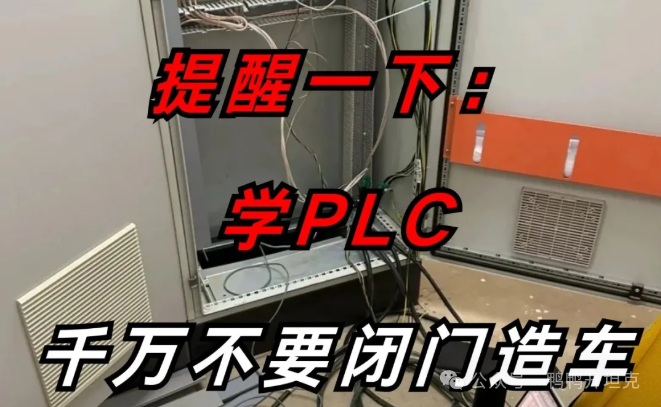
PLC Temperature Monitoring: Configuring Temperature Sensors for Early Overheating Risk Alerts!
Introduction
Hello everyone! Today, I want to share a crucial topic in industrial automation — PLC Temperature Monitoring Systems. Don’t worry, I will explain this seemingly professional technology in the most relatable way.Did you know? With proper temperature sensor configuration and PLC programming, you can receive early warnings about overheating risks, preventing equipment damage and production interruptions!Want to know how to do it? Let’s explore together!
Why is Temperature Monitoring So Important?
Imagine this: Your production line is running at full speed, and suddenly a critical piece of equipment shuts down due to overheating!This not only means expensive repair costs but could also lead to order delays.All of this is often just due to inadequate temperature monitoring.
Red Alert! Have you encountered the following scenarios?
-
Abnormal temperature in motor bearings, but it was already burned out by the time it was discovered
-
High oil temperature in hydraulic systems, leading to seal failure
-
Poor heat dissipation in electrical cabinets, causing frequent PLC module failures
Blue Alert! With a PLC temperature monitoring system, you can:
-
Monitor the temperature of critical areas in real-time
-
Receive early warnings about overheating risks
-
Automatically trigger protective measures (such as slowing down or shutting down)
Temperature Sensor Selection Guide
Selecting the right sensor is the first step to success! Common industrial temperature sensors include:
1. Thermocouples
-
Advantages: Wide measurement range (-200℃~1800℃), fast response
-
Disadvantages: Requires cold junction compensation, lower accuracy
-
Applicable Scenarios: High-temperature areas (such as furnaces, engines)
2. RTD (Resistance Temperature Detector)
-
Advantages: High accuracy (±0.1℃), good stability
-
Disadvantages: Slow response, higher cost
-
Applicable Scenarios: Precision temperature control (such as pharmaceuticals, food processing)
3. Infrared Temperature Sensors
-
Advantages: Non-contact, suitable for moving or hazardous areas
-
Disadvantages: Highly affected by environmental conditions
-
Applicable Scenarios: Rotating equipment, high-voltage electrical cabinets
Red Highlight! When selecting a sensor, be sure to consider:
-
Measurement range (whether it covers possible extreme temperatures)
-
Installation method (threaded, surface-mounted, or non-contact)
-
Signal output (analog 4-20mA/0-10V, or digital communication)
PLC Temperature Monitoring System Configuration
Now let’s get into the practical part! Using Siemens S7-1200 as an example, I will teach you how to set up a temperature monitoring system:
1. Hardware Connection
-
Connect the RTD (such as PT100) to the analog input module (such as SM1231)
-
Blue Tip! Use shielded cables to reduce interference and ensure terminal connections are secure
2. PLC Programming
// Sample code: Temperature monitoring and alarm logic
IF "Temperature_AI" > "High_Warning_Setpoint" THEN
"Warning_Light" := TRUE;
"Cooling_Fan" := TRUE;
END_IF;
IF "Temperature_AI" > "High_Alarm_Setpoint" THEN
"Alarm_Horn" := TRUE;
"Machine_Stop" := TRUE;
END_IF;3. HMI Interface Design
-
Real-time trend graph: Displays temperature change curves
-
Multi-level alarms: Yellow warning (approaching threshold), red emergency stop (exceeding limit)
-
Historical data: Records temperature fluctuations for fault analysis
Advanced Features: Predictive Maintenance
A smarter solution is here! Through PLC’s data logging + algorithm analysis, you can:
-
Learn the normal temperature curve of the equipment and establish a baseline model
-
Detect abnormal fluctuations (such as temperature rise due to early bearing wear)
-
Predict remaining lifespan (based on temperature-accelerated aging models)
Red Case! A packaging factory reduced its motor failure rate by 75% using this technology!
Common Problems and Solutions
| Problem Phenomenon | Possible Cause | Solution |
|———|———|———|
| Temperature reading jumps | Signal interference | Check grounding, add signal filter |
| Sensor unresponsive | Wiring break | Use a multimeter to check the circuit |
| Measurement value too low | Improper sensor placement | Reinstall to the core area of the heat source |
Interactive Questions
-
Which devices in your production line require temperature monitoring the most?
-
What type of temperature sensor have you used? What was the biggest challenge you faced?
-
If you could implement predictive maintenance, what problem would you most like to solve?
Conclusion
Temperature monitoring may seem simple, but it is the first line of defense against significant losses! Through today’s sharing, I hope you can:
-
Select the right sensor
-
Properly configure the PLC program
-
Detect overheating risks in advance
Remember: A successful early warning can save tens of thousands in repair costs! Do you have relevant experiences to share? Feel free to leave a comment for discussion!
ShareSaveViewLike